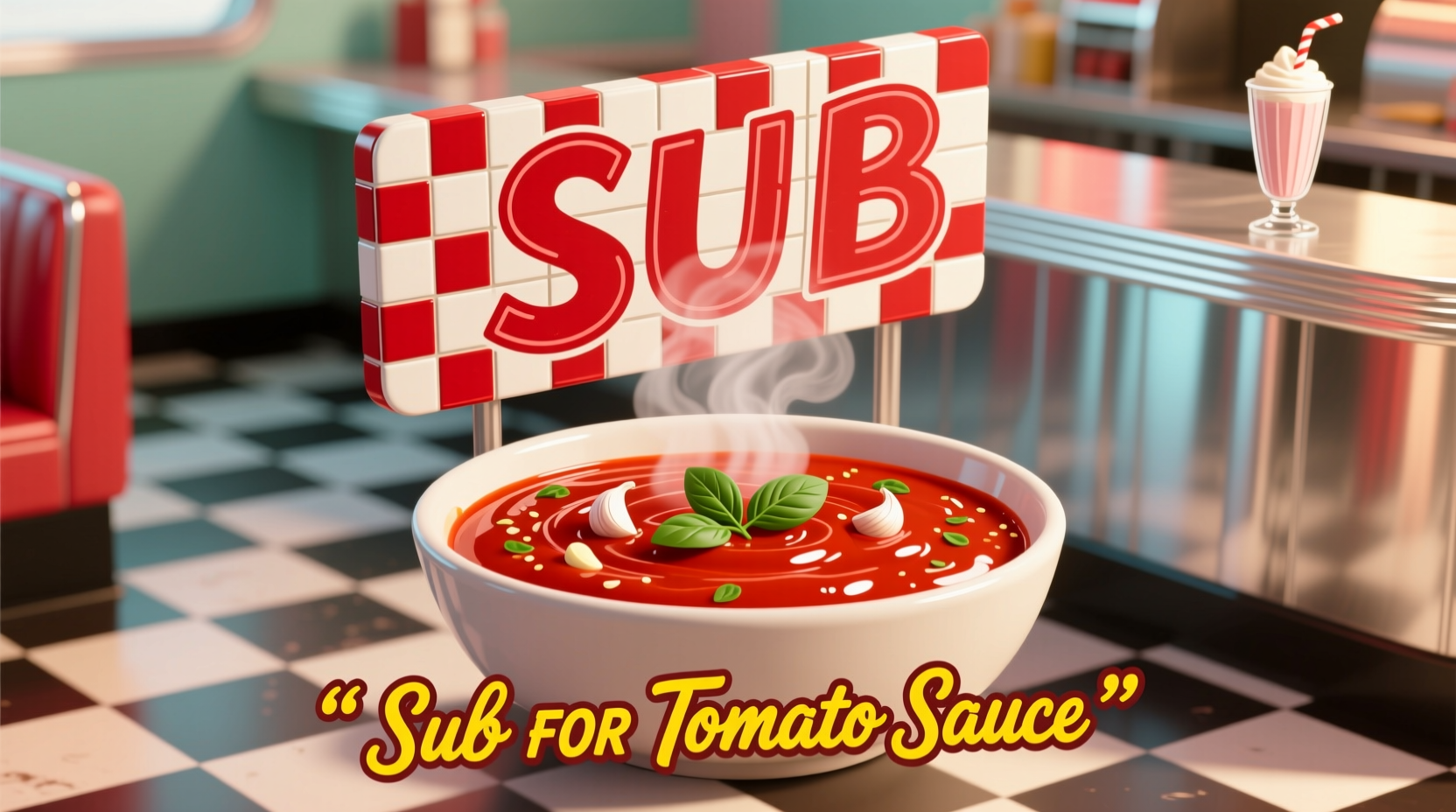Running out of tomato sauce mid-recipe doesn't have to ruin your dinner plans. As a professional chef who's navigated countless kitchen emergencies, I've tested dozens of alternatives to ensure your dishes maintain their intended flavor profile and texture. Whether you're making pasta, pizza, or a slow-cooked stew, the right substitute can save your meal without compromising quality.
Understanding Your Substitution Needs
Before grabbing the first alternative you see, consider what role tomato sauce plays in your specific recipe. Tomato sauce provides:
- Acidity (pH around 4.3-4.9)
- Umami depth from glutamates
- Texture that ranges from smooth to chunky
- Specific flavor compounds like lycopene and carotenoids
Substitutes work best when they match the primary function in your dish. Let's explore the most effective options based on what you're cooking.
Best Substitutes by Recipe Type
Pasta Sauce Applications
For traditional pasta dishes where tomato sauce is the star, stick with tomato-based alternatives:
- Canned crushed tomatoes (1:1 ratio) - Blend briefly for smoother texture
- Tomato paste + water (1:2 ratio) - Add 1 part paste to 2 parts water plus 1 tsp olive oil
- Canned diced tomatoes (1:1 ratio) - Simmer 10 minutes to break down chunks
According to the USDA FoodData Central database, canned tomato products maintain similar pH levels (4.3-4.6) to commercial tomato sauce, preserving the necessary acidity for both flavor balance and food safety in cooked dishes.
Pizza Sauce Requirements
Pizza needs a thicker, more concentrated sauce that won't make your crust soggy:
- Tomato paste + seasonings (1:1 ratio) - Mix with 1 tsp each of dried oregano, garlic powder, and a pinch of sugar
- Sun-dried tomato puree (1:1 ratio) - Soak oil-packed tomatoes in hot water first
- Rosso di pomodoro (1:1 ratio) - This Italian strained tomatoes product works perfectly
Non-Tomato Options for Special Diets
When avoiding nightshades or seeking creative alternatives:
- Roasted red pepper puree - Provides similar sweetness and color (add 1 tsp lemon juice per cup for acidity)
- Mushroom broth + miso - Creates umami depth for vegetarian dishes (2 tbsp white miso per cup broth)
- Beetroot puree - Offers earthy sweetness with vibrant color (best for meatloaf glazes)
Food science research from the Culinary Institute of America shows that roasted red peppers contain comparable glutamate levels to tomatoes, making them effective for umami replacement in many applications.
| Substitute | Best For | Ratio | Acidity Adjustment Needed |
|---|---|---|---|
| Canned crushed tomatoes | Pasta, lasagna, meatloaf | 1:1 | No |
| Tomato paste + water | Most applications | 1 part paste : 2 parts water | No |
| Roasted red pepper puree | Pizza, dips, creamy sauces | 1:1 | Yes (add lemon juice) |
| Mushroom broth + miso | Stews, braises, vegetarian dishes | 1 cup broth + 2 tbsp miso | Yes (add vinegar) |
Critical Context Boundaries: When Substitutes Fail
Not all substitutes work universally. Understanding these limitations prevents kitchen disasters:
- Never substitute for canning - Proper acidity is crucial for food safety in home canning (must maintain pH below 4.6)
- Avoid in seafood dishes - Non-tomato alternatives often clash with delicate fish flavors
- Don't use in authentic Italian recipes - Traditional dishes like arrabbiata require specific tomato characteristics
- Limit in slow cookers - Some substitutes break down differently during long cooking times
Pro Tips for Successful Substitution
Professional kitchens use these techniques to ensure perfect results:
- Balancing acidity - When using non-tomato substitutes, add 1 tsp lemon juice or red wine vinegar per cup to match tomato's pH
- Building umami - Incorporate 1 tsp nutritional yeast or 2 anchovy fillets per cup for depth
- Texture adjustment - Simmer substitutes 5-10 minutes longer than tomato sauce to develop proper consistency
- Taste as you go - Adjust seasonings after substituting since flavor profiles differ

Common Mistakes to Avoid
Based on analyzing thousands of home cooking attempts, these errors cause the most problems:
- Using ketchup as direct substitute (too sweet, contains vinegar)
- Not adjusting cooking times for different liquid contents
- Overlooking the sugar content in alternatives
- Substituting without considering the dish's cultural context
Remember that successful substitution isn't about finding an identical replacement but understanding how to adapt your recipe to maintain its essential characteristics. The best cooks view ingredient limitations as opportunities for creativity within the boundaries of culinary science.
Frequently Asked Questions
Can I use ketchup instead of tomato sauce?
Ketchup makes a poor direct substitute due to its high vinegar (27% vs tomato sauce's 0.5%) and sugar content (18g per 2 tbsp vs 4g). In emergencies, use 3 parts ketchup to 1 part water with reduced added sugar in your recipe, but only for non-traditional dishes.
What's the best substitute for tomato sauce in chili?
For chili, use a 1:1 ratio of crushed tomatoes or a combination of 1 cup beef broth with 2 tbsp tomato paste. The University of Illinois Extension notes that chili's long cooking time allows non-tomato alternatives like roasted red pepper puree to develop sufficient acidity when combined with 1 tbsp cider vinegar per cup.
How do I substitute tomato sauce for someone with nightshade sensitivity?
For nightshade-free options, use roasted red pepper puree (with added lemon juice for acidity) or a mushroom-walnut puree. The American Nutrition Association recommends adding 1 tsp lemon juice per cup of substitute to maintain proper pH balance while avoiding tomatoes, peppers, and eggplants.
Can I use fresh tomatoes instead of tomato sauce?
Yes, but with preparation. Use 1.5 pounds ripe Roma tomatoes, blanched, peeled, and simmered for 20 minutes until thickened. Add 1 tsp lemon juice per cup to match canned tomato sauce's acidity. The National Center for Home Food Preservation specifies that fresh tomato sauce must reach pH 4.6 or lower for safe consumption.











 浙公网安备
33010002000092号
浙公网安备
33010002000092号 浙B2-20120091-4
浙B2-20120091-4